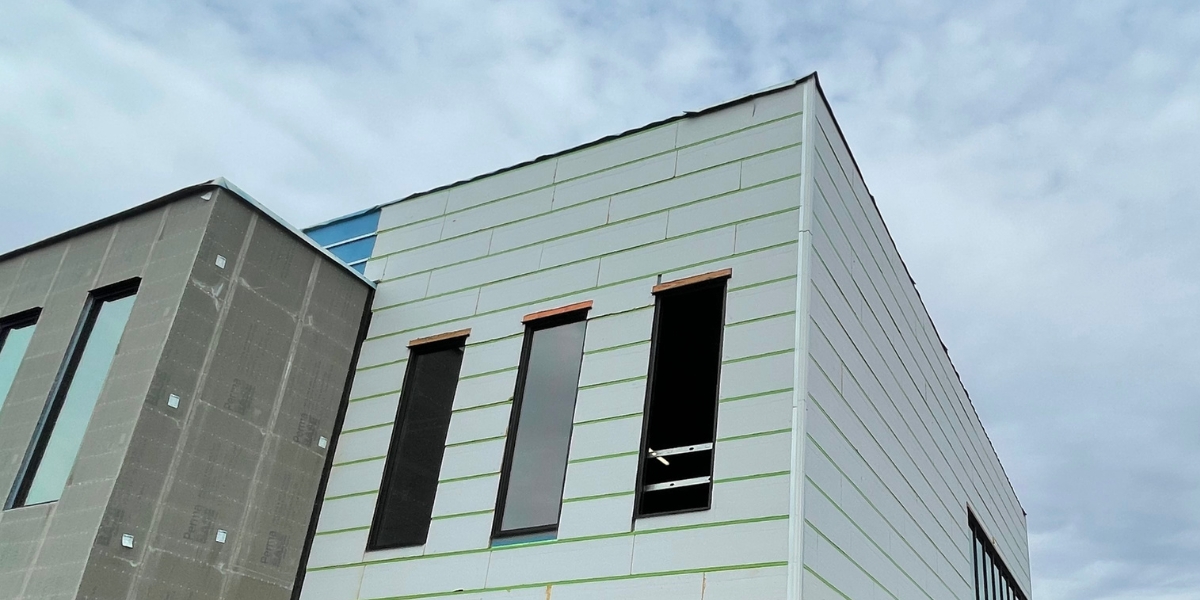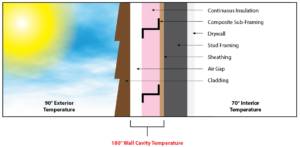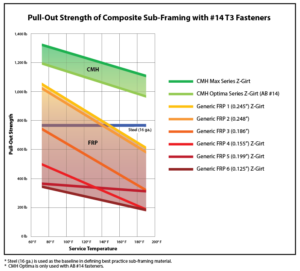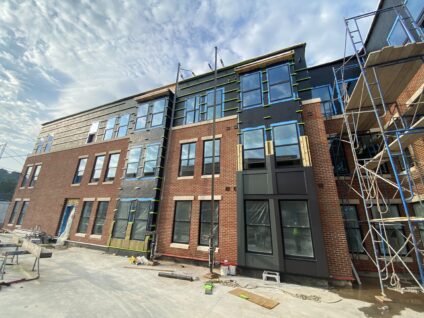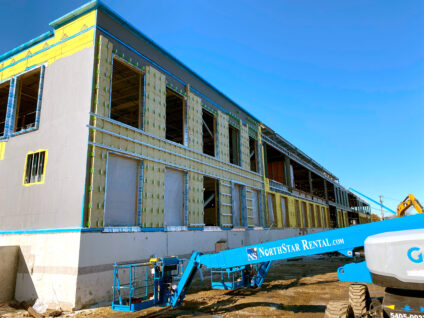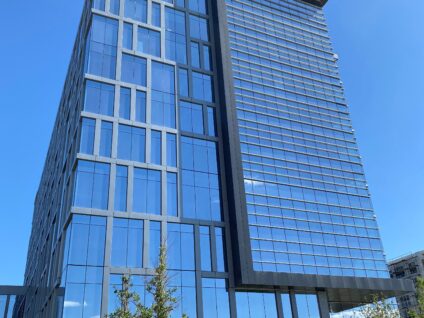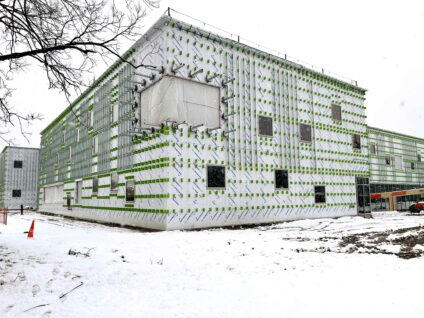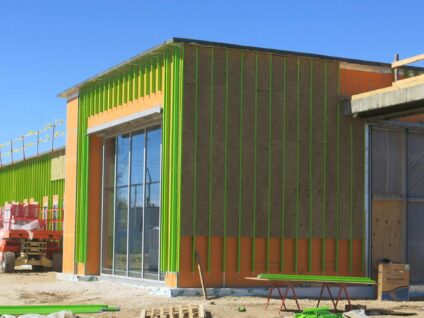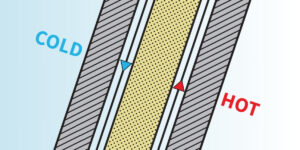With a building, it’s essential to consider the climate conditions common to the area where the building will be located. This will help you determine the type of materials and construction techniques best suited for the project. The climate conditions to consider include rainfall, humidity, and temperature extremes. By considering the climate when choosing the materials for your building project, you can be sure that your building will be able to withstand the rigors of any climate.
Sub-framing is a major component of the building envelope that plays a significant role in your building’s overall success. Choosing a best practice sub-framing material for your project can affect the lifespan of your building and affect any potential trailing liability issues down the road.
There are two main types of sub-framing material used for continuous insulation sub-framing: steel and composite. In this article, we will compare two types of composite sub-framing, fiber-reinforced polymer (FRP) and composite metal hybrid (CMH™), while using steel as our baseline.
Why design with composite sub-framing instead of steel?
Composite sub-framing has become a popular choice when it comes to sub-framing due to its thermally insulating properties. Although steel is a legacy sub-framing material known for its strength, composite has become more popular due to its corrosion resistance and thermal efficiency. Unfortunately, steel is highly conductive, leading to common issues such as thermal bridging, higher building operating costs, and moisture damage. All of these can ultimately lead to building failure.
However, when choosing your sub-framing material, 16-gauge steel should be used as a baseline for all composite sub-framing materials. A best practice composite sub-framing material should be equal to or stronger than 16-gauge steel.
Let’s look at the two primary composite sub-framing materials, FRP and CMH™.
Generic FRP vs. CMH™
What is Composite Metal Hybrid (CMH™)?
The composite metal hybrid (CMH™) sub-framing is composed of an interlocking steel insert located in both FRP flanges of the cross-linked thermoset Z-profile of the CMH girt. This steel insert allows for the fastening of cladding systems, providing a high strength-to-weight ratio for structural integrity and easy installation while still providing the thermal benefits of the FRP Z-profile.
✔ High structural strength ✔ High thermal efficiency
✔ High fastener retention ✔ Corrosion resistant
✔ High durability ✔ Interlocking steel insert
What is Fiber Reinforced Polymer (FRP)?
Fiber-reinforced polymer (FRP) sub-framing depends on manufacturer recommendations, which vary tremendously as different approaches and design methods are adopted. FRP materials are generally orthotropic, meaning their engineering properties are different in each of the three space directions (x, y, z). FRP can be customized using various resins, fibers, fillers, color pigments, and proportions.
✔ Low structural strength ✔ High thermal efficiency
✔ Low fastener retention ✔ Corrosion resistant
✔ Low durability ✔ No interlock
Structural Properties of Sub-Framing Materials
Unlike steel, composite properties like modulus of elasticity and tensile strength can vastly differ lengthwise and crosswise, leading to issues if not all directional properties are known or considered.
Because reinforced plastic thermosets are being used, operational temperatures and strength performance must be examined. Materials can lose strength in heat, even before they reach glass transition temperature. It’s crucial that sub-framing materials are tested for the high end of the operational temperature range to verify suitable strength.
Figure 1: Structural Properties of the Sub-Framing Materials
|
|
Steel (Baseline) | FRP | CMH™ |
|
Tensile Yield Strength (Longitudinal) |
33,000 PSI |
30,000 PSI* |
50,000 PSI |
| Tensile Yield Strength (Crosswise) | 33,000 PSI | 9,500 PSI* |
40,000 PSI |
*Average for multiple FRP
When designing with composite sub-framing, building envelope service temperatures must be taken into account. The temperature within the building envelope can significantly differ from exterior or interior temperatures (Figure 2). Therefore, testing must be provided and considered at increased temperatures for fastener pull-out, tensile strength (crosswise and lengthwise), and modulus of elasticity (crosswise and lengthwise).
Figure 2: Building Envelope Service Temperature
According to studies performed in the U.S., Canada, and Europe, surface temperatures – even in mild climates – can hit or exceed 180 degrees Fahrenheit. Testing in Germany, which has an environment similar to Eastern Canada, states, “temperatures higher than 176 degrees Fahrenheit are often reached.” ¹
Designing with composite sub-framing for building envelope service temperature can be accomplished in various ways, some easier than others. Modeling software, such as Envi-Met, THERM, EnergyPlus, and WUFI, gives you a precise analysis of the building envelope service temperature based on your building’s location and climate. Yet, this can be challenging to accomplish for each project. A simple yet accurate solution to determine your building envelope service temperature is to use the overall high and low temperatures. The safe operational range in the lower 48 states of the United States is similar to interior car temperatures, -40 degrees to 180 degrees Fahrenheit.
To prevent unexpected material failures due to service temperatures, your sub-framing manufacturer must provide material properties for this operational temperature range.
Fastener Pull-Out Strength of CMH™ and FRP Sub-Framing in Varying Temperatures
Several generic FRP materials were tested along with CMH for fastener pull-out strength at various service temperatures ranging from room temperature (70 degrees Fahrenheit) to elevated temperatures (190 degrees Fahrenheit).
Figure 3: Pull-Out Strength of Composite Sub-Framing with #14T3 Fasteners
According to the data shown above (Figure 3), the fastener pull-out strength of composite sub-framing can vastly decrease when the service temperature increases. Although CMH and FRP both saw a decrease in strength with an increase in temperature, CMH remains stronger than steel even at elevated temperatures. However, we can conclude that although some FRP started above the strength of steel at room temperature, they all fell below the strength of steel at elevated temperatures.
Conclusions for Fastener Pull-Out Strength of Composite Sub-Framing:
- All CMH performs better than 16 Ga. steel (baseline) at ALL service temperatures
- All FRP performs worse than 16 Ga. steel (baseline) at elevated service temperatures.
- Some FRP performs better than others.
- There is an indirect relationship between FRP flange thickness and fastener pull-out.
- Generic FRP Z-girts, on average, perform worse than commodity FRP.
- Fastener types and brands matter and perform differently.
Recommendations
Based on the information provided above, we recommend the following when designing with composite sub-framing:
- Know the strength properties of your sub-framing material in all directions, including lengthwise and crosswise.
- Know the strength of your sub-framing material at ALL service temperatures.
- Work with suppliers that provide single-source engineering for your specific project. Suppliers that don’t back up the engineering for your particular project can create trailing liability issues.
- Work with suppliers with FEA testing and modeling, as well as documented data and in-house testing.
- Choose a composite sub-framing material that is equal to or stronger than steel.
*Information listed is based upon the material samples available in the marketplace and datasheets from materials available at the current time of testing. Data listed is not considered all-inclusive for materials from other market spaces or other applications. An ASTM D7332 Procedure B pull-out test was done at service temperatures seen for various composite products with self-drilling fasteners. Testing was done inside an environmental chamber with pull-out measured at each temperature level for #3 and #5 drill point fasteners.
Sources:
- Bishara, Ayman; Kramberger-Kaplan, Helga; and Ptatschek, Volker. “Influence of Different Pigments on the Façade Surface Temperatures,” Energy Procedia, 2017, No. 132: 447-453.
© 2022 Advanced Architectural Products




